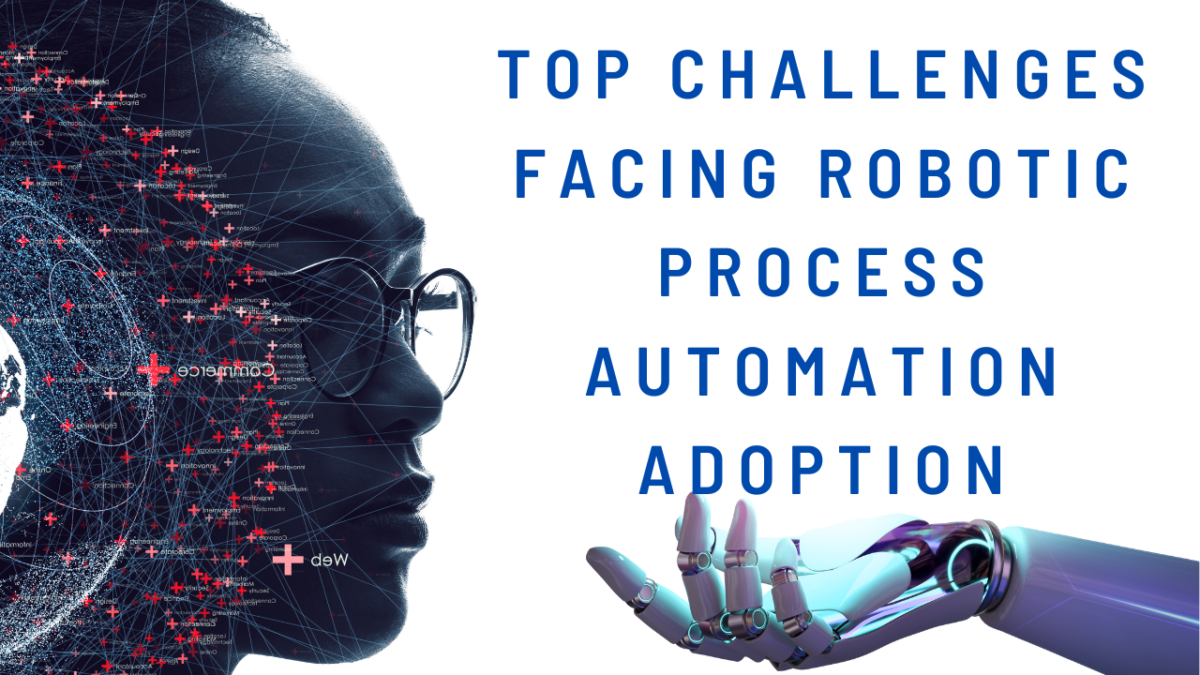Top Challenges Facing Robotic Process Automation Adoption

Robotic Process Automation (RPA) has seen significant growth in recent years, offering businesses a chance to automate mundane, routine tasks, thereby improving efficiency and reducing costs. Despite the transformative potential of this technology, its widespread adoption has encountered a variety of challenges. In this article, we will delve into the most prominent issues hindering RPA adoption.
Robotic Process Automation (RPA) is revolutionizing industries across the board, including mobile application development. However, RPA adoption in this field faces key challenges such as integration complexities and the need for specialized expertise. Overcoming these obstacles is crucial for harnessing the full potential of RPA in mobile app development.
Lack of Strategic Approach and Understanding
A common challenge hindering the adoption of RPA is the lack of strategic planning and understanding of the technology. Despite its potential, RPA is not a magical solution that fits all business models. Companies often implement it without considering how it fits into their existing processes, overall business objectives, and long-term strategic goals. Without this clarity, businesses run the risk of adopting technology that might not yield the expected ROI, potentially leading to wasted resources and failed implementations.
Furthermore, a common misconception is that RPA can function autonomously without human oversight or interaction. In reality, successful RPA implementation requires ongoing management and maintenance to ensure the technology continues to perform optimally and adapt to any changes in business processes.
Resistance to Change
The human aspect cannot be underestimated when it comes to technology adoption. Employees may resist RPA, fearing that automation could make their roles redundant. Others may be uncomfortable or intimidated by the prospect of working alongside advanced AI systems. This resistance often manifests itself as a reluctance to engage with the new systems, which can hamper effective adoption.
Change management, transparent communication, and training are crucial in addressing these concerns. By involving employees in the decision-making process, explaining the benefits of RPA, and providing adequate training, businesses can help to mitigate resistance and ensure smoother adoption.
Integration Issues
RPA works best when integrated with existing IT systems and software. However, businesses often face integration challenges due to a mismatch between RPA capabilities and legacy systems. Old, outdated systems might lack the necessary interfaces for integration, making it difficult to fully leverage the power of RPA.
These integration issues require businesses to either upgrade their existing systems, which can be costly and time-consuming, or find ways to work around these limitations, which can decrease the efficiency and effectiveness of the RPA solution.
Regulatory and Compliance Concerns
In sectors like healthcare, finance, and government, compliance with stringent regulatory requirements is crucial. The adoption of RPA in these sectors can be challenging due to concerns about how the technology will adhere to these rules and regulations.
For example, RPA solutions must be designed to ensure data privacy, prevent unauthorized access, and maintain an audit trail of activities. Failure to address these issues can result in serious legal consequences and damage to the company’s reputation.
Skill Gap and Availability of Expertise
The successful implementation and management of RPA services require a certain level of expertise. However, there is a noticeable skill gap in the market. A lack of experienced professionals who understand both the technology and its strategic application in business is a considerable hurdle.
Training existing staff or hiring new talent with the necessary skills can be a costly and time-consuming process. However, this investment is critical to the successful adoption and ongoing management of RPA solutions.
Scalability Issues
While RPA can deliver significant benefits on a small scale, scaling these benefits across an entire organization can be challenging. Problems that are minor at a small scale can become significant as the volume of automated tasks increases.
This scalability issue is compounded by the fact that RPA solutions often require customization to work effectively within a specific business context. Scaling such custom solutions can be complex, time-consuming, and expensive.
Conclusion
Despite these challenges, the benefits of RPA adoption are significant and wide-ranging, from cost savings and efficiency gains to improved accuracy and compliance. To successfully adopt RPA, organizations must develop a strategic approach that aligns with their business goals, involves employees in the process, ensures integration with existing systems, and addresses regulatory and compliance concerns.
Companies also need to invest in developing the necessary expertise within their workforce and create a plan for scaling RPA solutions. While these challenges may be significant, with the right approach and resources, they can be effectively managed, paving the way for successful RPA adoption.

